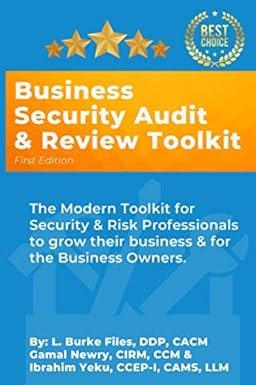Question
You are a newly certified public accountant recently hired by Thompson Certified Public Accountants, LLP. A client, Avery Corporation, who after the year-end 12/31/2014 but
You are a newly certified public accountant recently hired by Thompson Certified Public Accountants, LLP. A client, Avery Corporation, who after the year-end 12/31/2014 but before their books were closed, contacted the firm regarding transactions involving accounting changes and errors. This client is an SEC registrant and needs guidance on the application of the correct FASB pronouncements. Your direct supervisor wants you to research the authoritative guidance related to these situations and determine the proper course of action before meeting with the client.
Avery Corporation made the following determinations about three depreciable assets:
Depreciable asset M was purchased on January 1, 2012. The original cost was $114,000 and this amount was entirely expensed in 2012. This particular asset has an 8-year useful life and no salvage value. The straight-line method should have been used for depreciation purposes.
Depreciable asset N was purchased January 1, 2013. It originally cost $540,000 and, for depreciation purposes, the sum-of-the-years digit method was originally chosen. The asset was originally expected to be useful for 10 years and have a zero salvage value. In 2014, the decision was made to change the depreciation method from sum-of-the-years digits to straight-line to better match costs. Note: The estimates relating to useful life and salvage value remained unchanged.
Depreciable asset O was purchased January 1, 2010. It originally cost $160,000 and, for depreciation purposes, the straight-line method was chosen. The asset was originally expected to be useful for 8 years and have a zero salvage value. In 2014, the decision was made to extend the total life of this asset to 10 years and to estimate the salvage value at $5,000.
Question: Indicate if the situation is a change in accounting principle, a change in accounting estimate or an error in the financial statement. What is the proper accounting treatment (retrospective, restatement, prospective) for each of these assets? You must support your conclusions with cites to the applicable guidance listed in the FASB Codification. Ignore tax implications and assume all errors are material to the client and require adjustment.
Step by Step Solution
There are 3 Steps involved in it
Step: 1

Get Instant Access to Expert-Tailored Solutions
See step-by-step solutions with expert insights and AI powered tools for academic success
Step: 2

Step: 3

Ace Your Homework with AI
Get the answers you need in no time with our AI-driven, step-by-step assistance
Get Started


